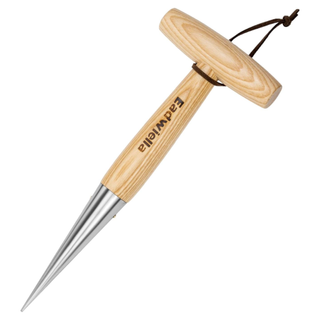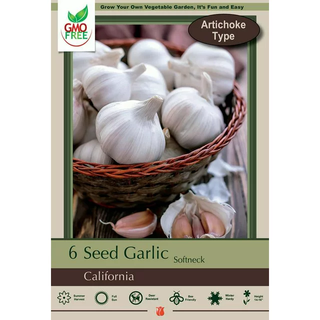When should I plant garlic? This is when experts get it in the ground for spring harvests
Garlic is a staple ingredient for so many meals, so why not grow your own in your vegetable garden?
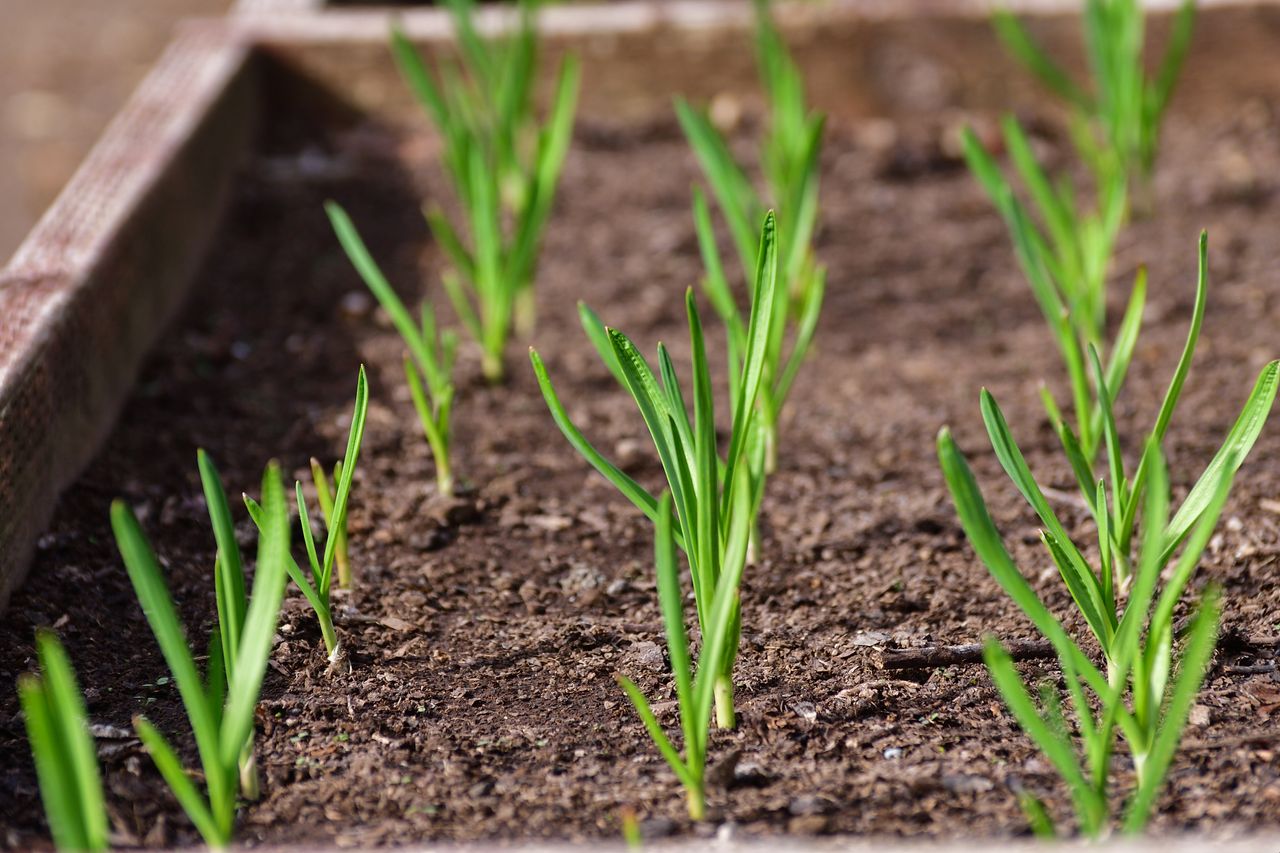

Fall is typically a season we associate more with harvesting vegetables than planting them, but that doesn't mean you can't continue your gardening endeavors well into October and beyond. In fact, there's one vegetable that thrives best when planted this time of year, and it's a staple ingredient for many well-loved meals. Its name? Garlic.
From pasta and paella to soups and stews (and virtually everything in between) garlic is a universally loved ingredient, so why not grow your own in your vegetable garden? As a cold-weather crop, fall is the ideal time to plant some garlic, and the best part is, that applies to virtually any hardiness zone in the northern hemisphere.
Keen to add some extra flavor to your cooking with some homegrown garlic? Here's everything you need to know about planting this beloved bulb in your backyard, including the perfect time window, an easy foolproof method, and when to harvest for a bumper crop.
Why is fall the best time to plant garlic?
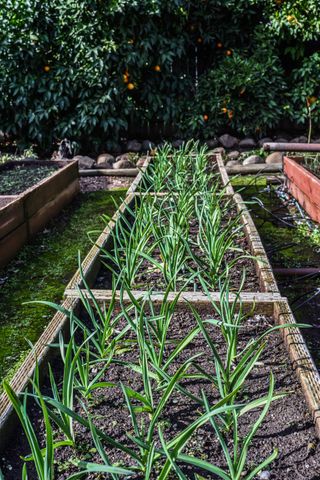
While the growing season for most plants is between spring and summer, there are a select few that do best in colder temperatures. Garlic is one of those.
'Fall is ideal for planting garlic, specifically a few weeks before the first hard frost,' explains Tony O'Neill, professional gardener and blogger at Simplify Gardening. 'This is because the garlic has time to establish roots before winter so that come spring, it's ready to shoot up and grow vigorously.'
'Timing is everything, and that's especially true when you're planting garlic,' adds Lina Cowley, gardening expert at Trimmed Roots. 'Planting in fall also puts the cloves through a period of cold dormancy, which encourages bulb development and leads to a more substantial and tastier harvest.'
Of course, the precise time to plant will depend on your local climate and the average temperature. While garlic is a vegetable that can be planted in September for some, others will need until even later in the season. In zones 3-5, garlic should be planted in late September to early October while in zones 5-7 roughly mid to late October is best. For warmer climates in zones 7-10 aim for late October into November, and even December for the southern-most regions.
How to plant garlic
If you're not ready to put your gardening on hold yet, here's how to grow your own crop of garlic in just three simple steps.
1. Choose your garlic bulbs
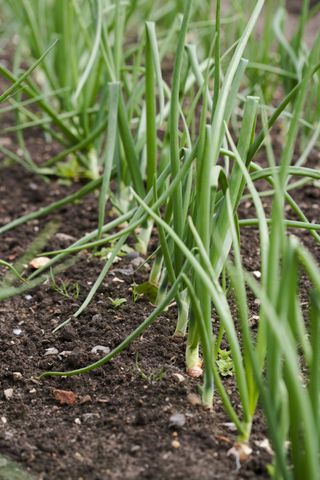
Rather than sowing seeds, garlic is grown from individual cloves (yep, the part that you cook with). In order to get started on garlic planting in your backyard, it's best to start with a whole bulb.
'You'll need garlic bulbs, but not just any bulbs will do,' notes Lina. 'Each bulb contains several cloves and each clove is capable of growing into a full-sized bulb. Opt for large, healthy bulbs from reliable sources as these are more likely to lead to a successful harvest.' This means large, fresh, and organic bulbs.
There are also some varieties that are better suited to home growing than others. Purple Stripe is a gardener's favorite since they typically have 8 to 12 cloves per bulb and are easy to grow, though they do tend to mature later in the season than other varieties.
2. Prepare the soil
Before you plant your individual cloves, you'll need to make sure you have the right soil. While garlic is a great vegetable for beginner gardeners, you do need to meet certain conditions for it to thrive, and soil is one of the most important.
'Garlic is like that guest at a party who has very particular needs,' says Lina. 'It loves a good, well-drained soil that is high in organic matter so, before you plant, loosen your soil, removing any rocks or debris, and boost its fertility by adding compost or well-rotted manure.'
'Garlic also prefers well-draining soil with a pH level between 6.0 to 7.5,' adds Tony. 'It thrives in full sunlight but can tolerate partial shade.' Like most plants, this staple veggie also needs sunlight, and plenty of it. 'Make sure it's planted in a spot that receives between six and eight hours of sunlight each day, and you'll have some very happy garlic,' Lina summarizes.
3. Plant the cloves
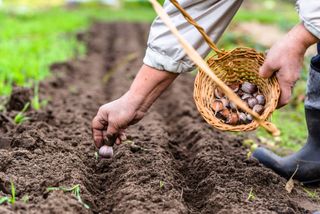
Now for part you've been waiting for - planting. 'Start by breaking up your garlic bulb into individual cloves,' says Lina. 'Be gentle here; you don't want to damage those precious growth points.' Tony also suggests doing this a few days before planting.
'Insert each clove into the soil with the pointed end facing upwards, and bury it about two inches deep,' Lina continues. 'Space out your cloves about four to six inches apart so they have plenty of space to grow into big, strong bulbs.' While the cloves do need sufficient space, since they're so tiny it means they're even suitable to grow in small vegetable gardens.
Garlic generally won't need a lot of water, but to improve bulb size it's best to water during dry spells as you enter spring.
When should you harvest garlic?
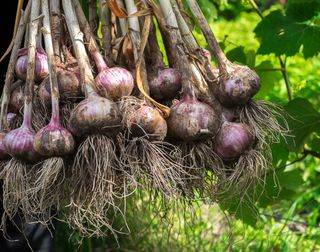
So when will your aromatic garlic bulbs be ready to eat? 'Like fine wine, good garlic takes time,' Lina says. 'Depending on the variety you've chosen, it can take between eight to ten months for your garlic to be ready for harvesting. Let your eyes be your guide here; the leaves will change color, turning yellow or brown and starting to dry out when it's time to harvest.'
According to Tony, however, ensuring you planted at the prime time and with the right conditions for growth, your garlic should be ready in late spring or early summer. 'As a rule of thumb, harvest when the bottom two or three leaves have browned, but the top ones remain green,' he advises. 'Digging them out rather than pulling is essential to prevent breaking the stalks.'
Can you use store bought garlic for planting?
One step where many garlic growers go wrong is sourcing their bulbs for planting. Unlike other store-bought veggies, it's generally best to avoid using the regular garlic bulbs you buy for cooking.
'This is because many commercially grown garlic bulbs are treated with chemicals to prevent sprouting, which can affect their effectiveness when planted,' notes Lina. 'For prime results, source your garlic bulbs from a local nursery or a trusted online seed supplier. This way, you're ensuring you're planting garlic that's been specifically cultivated for growth, increasing your chances of a fruitful harvest.'
Can you grow garlic in pots?
Is your outdoor space at a premium? You'll be pleased to hear that it's perfectly possible to grow garlic through container gardening. 'Just ensure you use a deep pot that's at least 10 inches deep with good drainage, says Tony. 'Follow the same planting instructions, but remember that potted garlic may require more frequent watering.'
Ready to add some more garlic-y goodness to your dishes? It doesn't get better than homegrown.
Be The First To Know
The Livingetc newsletter is your shortcut to the now and the next in home design. Subscribe today to receive a stunning free 200-page book of the best homes from around the world.

Lilith Hudson is a freelance writer and regular contributor to Livingetc. She holds an MA in Magazine Journalism from City, University of London, and has written for various titles including Homes & Gardens, House Beautiful, Advnture, the Saturday Times Magazine, Evening Standard, DJ Mag, Metro, and The Simple Things Magazine.
Prior to going freelance, Lilith was the News and Trends Editor at Livingetc. It was a role that helped her develop a keen eye for spotting all the latest micro-trends, interior hacks, and viral decor must-haves you need in your home. With a constant ear to the ground on the design scene, she's ahead of the curve when it comes to the latest color that's sweeping interiors or the hot new style to decorate our homes.
-
 Florals *Can* be Groundbreaking, and This Unlikely Collaboration Proves How
Florals *Can* be Groundbreaking, and This Unlikely Collaboration Proves HowItalian fashion house, Moschino, tapped Sanderson’s iconic floral archive for its latest show in Milan
By Julia Demer Published
-
 The "One Amazing Thing" Theory Could Just Be the Secret to Making Your Decorating Budget Go Further (While Making More Impact)
The "One Amazing Thing" Theory Could Just Be the Secret to Making Your Decorating Budget Go Further (While Making More Impact)What if we told you designers had found a way to control a project's spend even while elevating the final result? This new trend does just that
By Pip Rich Published
